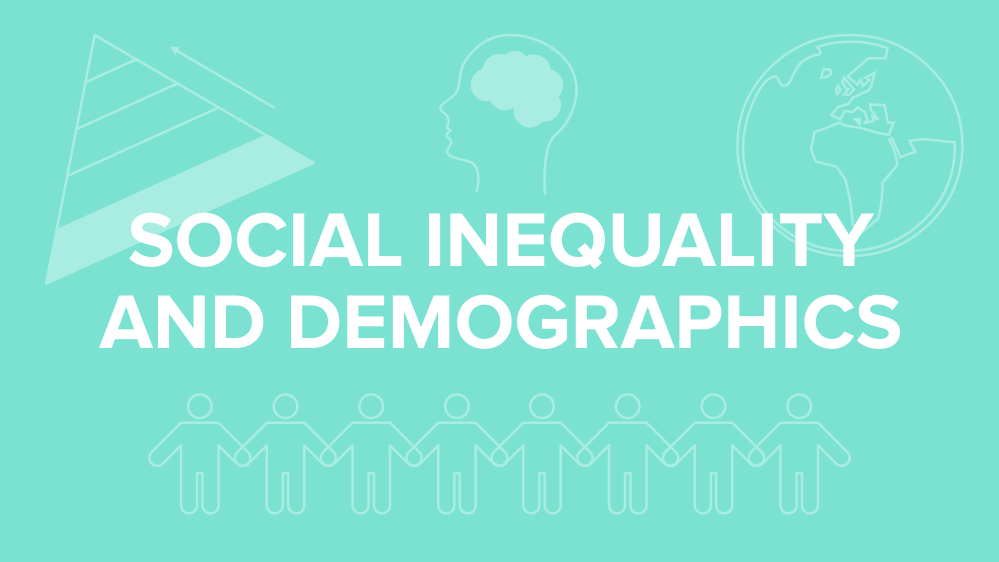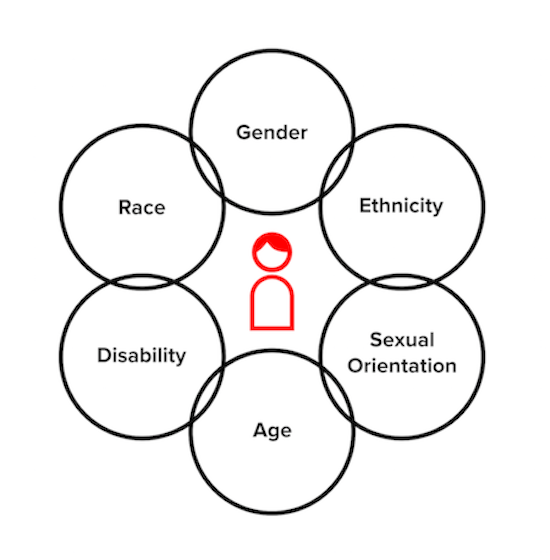Social Inequality and Demographics for the MCAT: Everything You Need to Know
/Learn essential MCAT Psych/Soc topics on social inequality including health disparities, demographics, social mobility, and MCAT practice questions.
(Note: This guide is part of our MCAT Psychology and Sociology series. )
Part 1: Introduction to social inequality and demographics
Part 2: Social class
a) Socioeconomic status
b) Forms of capital
c) Intersectionality
d) Class and false consciousness
e) Bureaucracy
Part 3: Spatial inequality
a) Residential segregation
b) Environmental justice
c) Poverty
d) Global inequalities
Part 4: Health and healthcare disparities
a) Socioeconomic gradient in health
Part 5: Epidemiology and demographics
a) Epidemiology basics
b) Demographic classes
c) Fertility, migration, and mortality
d) Theories of demographic change
e) Population pyramids
f) Social movements and globalization
Part 6: High-yield terms
Part 7: Social inequality practice passage and answers
Part 8: Practice standalone questions and answers
Part 1: Introduction to social inequality and demographics
Social inequality and demographics are high-yield sociology topics that are likely to give you points on the MCAT. These subjects help to explain many of the challenges our world faces today, and you will gain a greater appreciation of these challenges as you continue your journey towards becoming a physician.
(Suggested Reading: MCAT Psychology and Sociology: Everything You Need to Know for the MCAT)
As you go through this guide on social inequality and demographics, we’ve bolded several important terms, and we encourage you to create your own definitions and examples as you move through this resource so that they make the most sense to you! At the end of this guide, there’s an MCAT-style practice passage and standalone questions that will test your knowledge and show you how the AAMC likes to ask questions.
Let’s begin!
Part 2: Social class
Social class divides society based on socioeconomic status, which is a term we’ll cover in more detail shortly. The simplest breakdown of social class says that there are three levels of society: upper-class, middle-class, and lower-class.
Status can be more generally defined as falling into two subtypes: ascribed and achieved status. Ascribed status is a status that you are born with and cannot change, such as your skin color or age. Achieved status, on the other hand, is a status that can be changed or earned, such as the status of being a doctor. Master status is the status that is primarily used to identify an individual. For example, LeBron James is mostly known as a famous basketball player, which would be his master status. However, he’s also a father, husband, and philanthropist.
With this in mind, let’s take a look at an extremely important topic: socioeconomic status.
a) Socioeconomic status
Socioeconomic status (SES) defines the social standing of a group based on a combination of factors, such as social group, income, or education. SES analyses often show racial disparities and inequalities that prevent people of color from achieving a proportionate level of middle- or upper-class status levels.
The phrase “poverty breeds poverty” describes this phenomenon, known as social reproduction, or the idea that social inequalities are passed between generations. Many times, disadvantaged children attend underfunded schools and lack access to extracurricular resources, making it harder for them to obtain strong educations, well-paying jobs, and move into middle- or upper-class SES.
In the case that an individual is able to move between different SES, that is known as intragenerational mobility. If an individual’s child moves into a different SES than the parent, that is known as intergenerational mobility. The movement from a lower SES to a higher SES is known as upward mobility, while the movement from a higher SES to a lower SES is known as downward mobility. The movement within an SES is known as horizontal mobility, and the movement out of an SES to another SES is known as vertical mobility.
Individuals with a higher SES may have that status due to more power, privilege, and prestige. Power is the ability of an individual to influence the behavior or conduct of others. Privilege is an entitlement or advantage that is unearned and can be used to an individual’s benefit. Prestige is a reputation an individual with a high SES has and can be a result of either ascribed or achieved status.
b) Forms of capital
Social and cultural capital are partially responsible for social reproduction as they work to block intragenerational and intergenerational mobility. Together, social and cultural capital can also lead to social isolation or social exclusion, which describes the process by which individuals with a low SES are excluded from many resources.
Social capital describes the connections that an individual has can lead to economic, social, or personal benefits. For example, a wealthy individual’s connections through his or her job may allow his or her child to obtain a coveted internship position in that same company. On the other hand, an individual with a lower SES may not have access or time to form personal connections that allow his or her child to obtain a well-paying job.
Cultural capital describes non-economic resources that allow for economic, social, or personal benefits. Cultural capital falls into three categories, which include objectified (i.e., personal belongings), embodied (i.e., how you act or talk), and institutionalized (i.e., education). For example, an individual with a lower SES may only have access to underfunded educational systems, thereby preventing him or her from obtaining a better-paying job.
c) Intersectionality
Intersectionality describes the interconnected nature of oppressed groups, which leads to overlapping and compounding disadvantages for individuals. For example, a person of color belongs to a certain oppressed group, and they may have a low SES, which also makes them an oppressed group. Intersectionality states that there is a correlation between these different oppressed groups, leading to a compounded and exacerbated negative effect. It is important to note that intersectionality, however, has been refuted by some as lacking nuance.
Figure 1. intersectionality
Gain instant access to the most digestible and comprehensive MCAT content resources available. 60+ guides covering every content area. Subscribe today to lock in the current investments, which will be increasing in the future for new subscribers.



